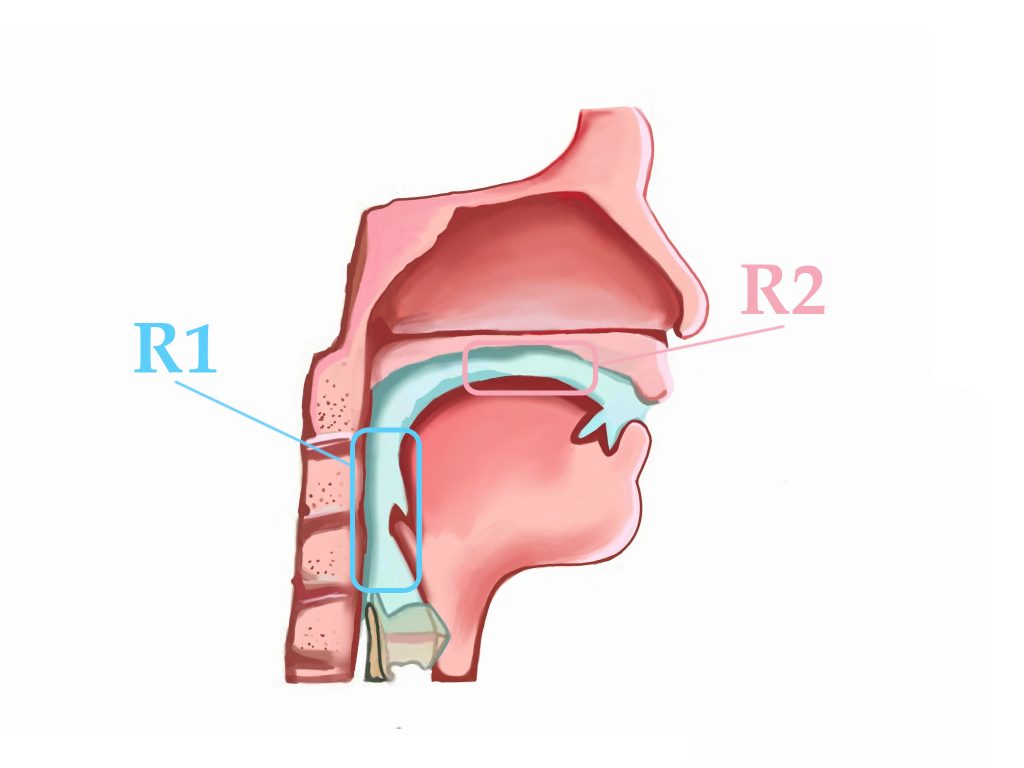The Magic of R1: The Primary Gender Control Knob of Your Voice
Hello there, lovely readers! Today we’re diving into something fascinating—the world of vocal resonance, specifically an area known as R1. Now, if you’re scratching your head wondering what R1 is, don’t worry! By the end of this post, you’ll be talking about R1 like a pro.
What is R1?
Imagine your voice as an instrument. It’s a beautiful blend of various sounds and tones. But have you ever wondered what makes your voice sound the way it does? Or why some voices are high and chirpy while others are low and rich? The answer lies in the magic area within your vocal mechanism, known as R1.
R1 is a term we use to describe the area that includes your laryngeal space (that’s in your neck, where your voice box is) and your pharyngeal space (at the back of your throat). Picture R1 as the “master control room” of your voice. It’s where all the essential tweaks and adjustments happen.

Why is R1 Important?
R1 is often referred to as the “primary gender control knob.” Fancy term, right? It means that R1 plays a significant role in how your voice sounds in terms of being more feminine or masculine. In simple terms, where your voice vibrates or “resonates” will decide its tone and range.
Tone and Range
Let’s break down these two words. ‘Tone’ is the color of your voice. Is it bright like a sunny day, or dark like a cozy evening? Is it warm like a hug, or rich like chocolate cake?
‘Range’ is about how high or low your voice can go. Imagine a piano. Some people’s voices hit the high keys easily, while others are more comfortable with the lower ones.
The R1 Effect on Tone and Range
R1 affects the amount of “bass” in your voice. Think of bass as the deep sounds you hear in music. When R1 is in a low position, it adds more bass, which makes a voice sound more masculine. Testosterone, a hormone more prevalent in males, enlarges the pharyngeal and laryngeal areas, causing R1 to drop. On the other hand, a high R1 position will have less bass, resulting in a voice that sounds more feminine.
Feminizing the Voice
If someone wants to make their voice sound more feminine, the primary challenge is learning how to create and maintain a high R1 position. Trust me when I say that 70-80% of the work is focused here. But don’t be discouraged! With practice and dedication, it’s entirely achievable.
Exercises to Train R1
I often guide my clients through specific vocal exercises aimed at modifying the position of R1. These exercises help narrow the pharyngeal and laryngeal spaces, effectively lifting the R1 position. Here’s a simple exercise to try:
- Humming: Start by comfortably humming a note.
- Raise it: Slowly raise the pitch while paying attention to how it feels in your throat.
- Hold it: Once you’ve reached a higher pitch that still feels comfortable, try to maintain it.
- Awareness: Become aware of the sensation in your throat. That’s your R1 shifting!
These exercises should be done under the supervision of an experienced SLP to ensure you’re on the right track and not straining your voice.
Wrapping Up
Understanding R1 is like getting a backstage pass to the concert that is your voice. It’s empowering, fascinating, and above all, transformative. Whether you’re exploring voice feminization or just curious about why your voice sounds the way it does, R1 is your key to unlocking a whole new world of vocal possibilities.
So, go ahead and embrace the magic of R1. And remember, your voice is your signature, make it as unique as you are!
Until next time!
